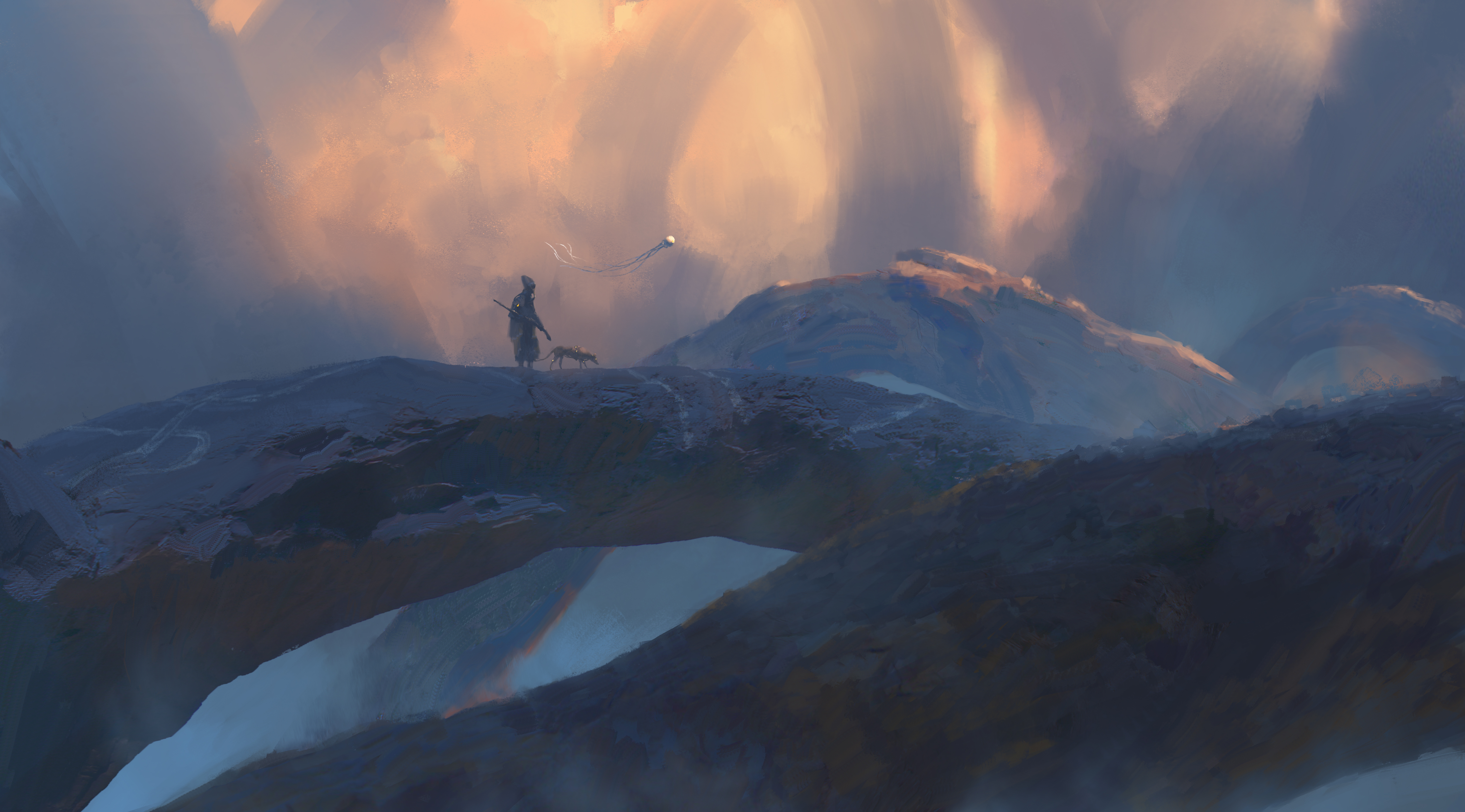The Ral-Mi guide took me on a fly-over first, said it was the only way to really appreciate just how large the jungle I'd be exploring was.
It was not an exaggeration, The Nege was an endless sea of green that stretched skywards more like mountains than jungle. It went on as far as the eye can see, and only seemed to grow taller the further inland we went.
We were not allowed to fly too low, our guide said we could be attacked if we get too close to the tree tops. Even at our altitude I could see giant vibrant lifeforms breaching the green foliage like dolphins in a ships wake. It was an endless expanse of green, and if my guide was correct the entire jungle was broken in layers upon layers formed over tens of millenia.
Tel-Nege is the landmass that comprises the entire eastern side of the main continent. A massive Corallum caldera formed right in the center of the landmass, which is home to the world's oldest Nege trees. This place is a wild and untamed jungle even in the Banner Era.
It is estimated that only 35% of the species in this region have been documented.
On the western edge of this region, lies the home of Aempis, a coral-bound and flat area that forms fertile plains and large shallow Corralum network. To the bottom of the continent, the Nege forest turns into a traditional rainforest similar to the kind found in the Verra Peninsula
Phenomena
The Nege divides itself into many smaller parts—chambers and cells enclosed by a dense wood. This can result in great dangers living adjacent to sanctuaries, with no more than a few inches of fossilized wood separating them.
Sometimes, the chambers cross-contaiminate
Floods
The Nege stores water within somacysts and its bark, and will respond to intense heat by redirecting the flow of water into a chamber to protect itself. These flashfloods arrive with little warning for the unprepared.
Slog
The digestive, filtering slime of the Nege somacysts. Ejected into pools, then absorbed back into the tree, this acidic slurry sometimes ends up pumped into inhabited chambers when the Nege is low on calories.
Swarms
The Rutas Olu of the Nege are particularly
Blight
Meta Voids
With so much space within the Nege, and so few Sepulchres
Flora Spores
Most places within the Nege are not fit for bare lungs. The air is smoky with sickening spores
Major Regions
Native Life
Landmarks
Every site becomes a pilgrimage when the route to it is treacherous and must constantly be carved from the rampant overgrowth of the Nege. Upkeep is a faith all its own, but without landmarks, finding your way through the maze of the Nege is next to impossible.
Common Landmarks
Sepulchres
Though Rare, Sepulchres
Standing Markers
Signposts and mile-markers left behind to mark the roads, often with holes bored into their sides for travelers to mount their tentpoles on. When travelers stop to rest, it is at the foot of these fossils, where they can put their backs against something
Scir'ranani Altars
Well-hidden to the common eye, Scir'ranani caches dot Nege's winding roads. It's customary among native travelers to bring a surplus of supplies and leave caches of them hidden when they stop to rest. They're a frequent lifesaver to lost travelers, who may require antidotes or medicine after a run-in with the native wildlife.




An Interesting article with much to think about. I can't wait to read more about this jungle/Woodland expanse as it is explored and studied. Aemon
Thanks Aemon! There are a ton of stories to tell within the depths of the Nege! We look forward to telling some of them!